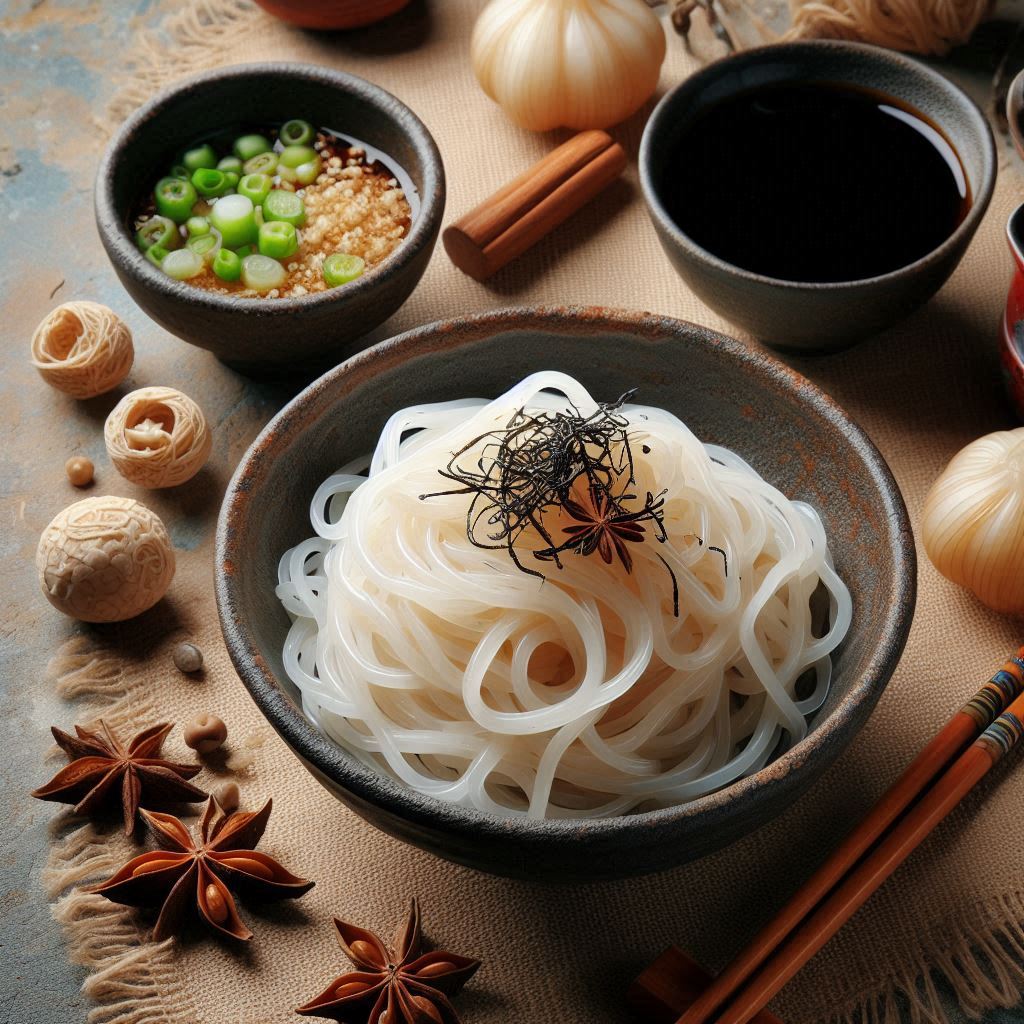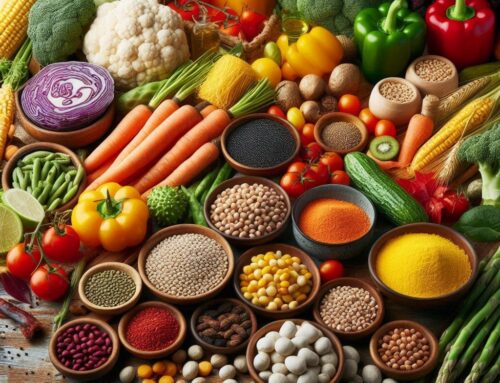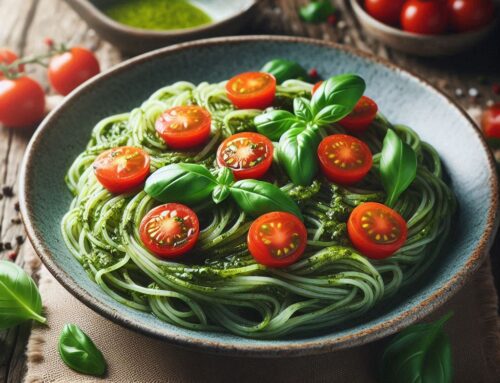
Introduction: Discovering the Magic of Konjac Noodles and Soy Sauce
Konjac noodles and soy sauce are two culinary staples that have been captivating health enthusiasts and food lovers alike. Delving into the world of konjac noodles, these unique offerings are derived from the konjac plant, a root vegetable native to parts of Asia. Known for their low-calorie content and high fiber levels, konjac noodles are an excellent healthy noodle option for those looking to manage their weight or maintain a balanced diet. The primary benefit of these noodles lies in their glucomannan content—a soluble fiber that can aid digestion and promote feelings of fullness.
Soy sauce, on the other hand, is a versatile condiment with a rich history and diverse varieties. From light soy sauce used in dipping to dark soy sauce perfect for marinades, each type brings its own unique flavor profile to dishes. Beyond taste, soy sauce also offers nutritional benefits; it’s low in calories yet packed with umami flavor, making it an ideal seasoning choice for enhancing meals without adding excessive fat or sugar.
Together, konjac noodles and soy sauce create a harmonious pairing that not only satisfies taste buds but also aligns with health-conscious eating habits. Whether you’re exploring new healthy noodle options or seeking to understand what is konjac better, incorporating these ingredients into your meals can open up a world of delicious possibilities while supporting your nutritional goals.
The Health Benefits of Konjac Noodles: A Low-Calorie Pasta Alternative
Konjac noodles, often referred to as “shirataki noodles,” have gained popularity as a low-calorie pasta alternative that fits seamlessly into various dietary plans. These noodles are made from the root of the konjac plant, which is rich in glucomannan, a type of dietary fiber known for its impressive health benefits.
One of the primary attractions of konjac noodles is their extremely low-calorie content. This makes them an ideal choice for those looking to reduce their calorie intake without sacrificing volume or satisfaction in their meals. For individuals following weight loss regimens, these “weight loss noodles” can be an excellent addition to help maintain fullness and curb cravings.
Moreover, konjac noodles are naturally gluten-free, making them a perfect pasta alternative for those with gluten sensitivities or celiac disease. This allows individuals on restrictive diets to enjoy diverse culinary experiences without compromising their health needs.
The health benefits of konjac extend beyond just being a low-calorie and gluten-free option. The high dietary fiber content found in these noodles aids digestion and promotes gut health by fostering beneficial bacteria growth in the intestines. Additionally, this fiber can contribute to better blood sugar control by slowing down carbohydrate absorption.
Incorporating konjac noodles into your diet not only supports weight management goals but also enhances overall digestive well-being. As more people discover these versatile and nutritious alternatives, they continue to redefine what healthy eating looks like in modern cuisine.
Soy Sauce 101: Different Types and Their Unique Flavors
Soy sauce, a staple in many kitchens around the world, boasts a rich diversity of types, each with unique flavor profiles that can elevate any dish. Understanding these differences can help you choose the perfect soy sauce for your culinary creations.
One of the primary distinctions in soy sauces is between light and dark varieties. Light soy sauce, prevalent in Chinese cuisine, is thinner and saltier with a lighter color. It’s often used for seasoning and marinating because it enhances flavors without overpowering them. On the other hand, dark soy sauce is thicker and sweeter due to added molasses or caramel. It lends a deeper color to dishes and is ideal for braising or adding depth to stir-fries.
Another comparison often made is between tamari and regular soy sauce. Tamari originates from Japan and typically contains little to no wheat, making it an excellent choice for those seeking gluten-free options. It offers a richer umami flavor with less saltiness compared to its Chinese counterpart, which generally includes wheat as an ingredient.
Each type of soy sauce brings its own distinct characteristics to the table—whether you’re looking for something salty and light or rich and robust. By understanding these nuances, you can experiment with different types of soy sauces to create dishes that are both flavorful and authentic.
Perfect Pairings: How to Choose the Right Soy Sauce for Your Konjac Dishes
When it comes to crafting the perfect konjac noodle dish, selecting the right soy sauce can make all the difference in elevating flavors and creating a harmonious meal. Understanding how to pair flavors with konjac noodles is key to enhancing your culinary experience.
Konjac noodles, known for their neutral taste and unique texture, act as a blank canvas that can be transformed by the addition of a well-chosen soy sauce. For those seeking a rich umami flavor, traditional dark soy sauce is often considered the best soy sauce for dishes that require depth and complexity. Its thicker consistency and robust taste complement hearty ingredients like mushrooms or tofu beautifully.
If you prefer a lighter touch, light soy sauce offers a subtler flavor profile that’s ideal for more delicate pairings. This type of soy sauce works wonderfully with fresh vegetables or seafood, allowing their natural flavors to shine while still adding a hint of savory goodness.
For those looking to experiment further, flavored sauces such as mushroom or garlic-infused soy sauces can introduce exciting new dimensions to your konjac noodle creations. These variations not only enhance noodle dishes with sauces but also provide an opportunity to tailor each dish according to personal taste preferences.
Ultimately, choosing the right soy sauce involves considering both the ingredients in your dish and your desired flavor outcome. By thoughtfully pairing these elements together, you can transform simple konjac noodles into an extraordinary culinary experience that delights the senses.
Mouthwatering Konjac Noodle Recipes with Soy Sauce You Need to Try
Konjac noodles, known for their low-carb and calorie-friendly properties, are a fantastic ingredient for those looking to maintain a healthy diet without sacrificing flavor. When paired with soy sauce, these noodles become the foundation for some truly mouthwatering dishes. Here are a few easy konjac stir-fry recipes that you need to try.
First up is the Classic Soy Sauce Stir-Fry. Begin by rinsing your konjac noodles thoroughly under cold water to remove any residual odor. In a hot pan, add a splash of sesame oil and toss in your favorite vegetables—think bell peppers, broccoli, and snap peas. Once the veggies are tender-crisp, add the konjac noodles and drizzle generously with soy sauce. For an extra kick, sprinkle in some freshly grated ginger or garlic.
Another delightful option is the Spicy Peanut Konjac Noodles. After preparing your noodles as usual, mix together soy sauce, peanut butter, chili paste, and a hint of lime juice to create a rich and spicy sauce. Toss this mixture with your konjac noodles along with sliced scallions and crushed peanuts for added texture.
For those seeking protein-packed low-carb meals with konjac noodles and soy sauce, consider adding thinly sliced chicken or tofu into your stir-fry mix. Marinate them briefly in soy sauce before cooking to infuse additional flavor into every bite.
These recipes not only highlight the versatility of konjac noodle recipes but also demonstrate how simple it can be to create delicious low-carb meals that satisfy both taste buds and dietary goals alike.
Tips for Cooking with Konjac Noodles and Maximizing Flavor Profiles with Soy Sauce
Konjac noodles, often celebrated for their low-carb and calorie-friendly nature, can be a fantastic addition to your culinary repertoire. However, knowing how to cook konjac noodles properly is essential to making the most of their unique texture and ability to absorb flavors. Here are some tips to elevate your konjac noodle dishes and maximize flavor profiles, especially with the versatile use of soy sauce.
First, rinse the konjac noodles thoroughly under cold water. This step is crucial as it helps remove any residual liquid that may carry an unfamiliar scent. Once rinsed, boiling them for about 2-3 minutes can further improve their texture by softening them slightly.
To maximize flavor in healthy dishes featuring these noodles, consider pairing them with robust ingredients like garlic, ginger, or chili peppers. These bold flavors can complement the neutral taste of konjac noodles beautifully.
Soy sauce plays a pivotal role in enhancing the taste profile of your dish. Opt for low-sodium varieties if you’re watching your salt intake but still want that umami punch. When cooking tips for low-carb pasta alternatives are on your mind, remember that adding soy sauce towards the end of cooking allows its rich flavor to coat each noodle evenly without overpowering other ingredients.
For an extra layer of complexity, try incorporating toasted sesame oil or rice vinegar alongside soy sauce. These additions not only enrich the overall taste but also bring out subtle nuances in any accompanying vegetables or proteins you choose to include.
By following these techniques and experimenting with different combinations of flavors and textures, you can transform simple konjac noodles into a delightful meal that’s both satisfying and aligned with your dietary goals.






